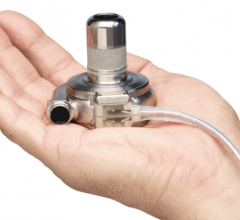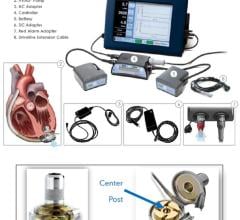
Image courtesy of CardiacAssist Inc.
April 27, 2015 — CardiacAssist Inc. announced that it received a Class 3 CE-mark for its Protek Duo veno-venous cannula. The Protek Duo is licensed for use as a single cannula for both venous drainage and reinfusion of blood via an internal jugular vein during extracorporeal life support procedures. It has already been deployed at more than 50 hospitals in the United States since its initial launch in late 2014.
Acute respiratory distress syndrome (ARDS) affects an estimated 2.2 million people worldwide each year. Despite receiving therapy with mechanical ventilation, almost half of those diagnosed with ARDS will die as a result of the disease. Veno-venous extracorporeal life support (VV ECLS) is an emerging therapy designed to provide a higher level of support by infusing oxygen directly into the blood using an oxygenator. In one large randomized, controlled clinical trial of 180 adult ARDS patients, the use of advanced VV ECLS therapy was shown to improve the rate of survival free from disability by 34 percent versus conventional management with mechanical ventilation.
Insertion of the Protek Duo cannula can be performed through a percutaneous procedure, and patient management is simplified by combining with the lightweight TandemHeart pump, which can be placed directly on the patient. The TandemHeart platform is approved for up to 30 days of circulatory support and is designed to allow a degree of patient mobility not possible with mechanical ventilation or any alternative ECLS device. Additionally, the Protek Duo is designed for omnidirectional flow and can bypass the right ventricle of the heart by directing flow from the patient’s right atrium to the pulmonary artery, optimizing gas exchange and simultaneously reducing stress on the right side of the heart.
For more information: www.cardiacassist.com


 October 31, 2023
October 31, 2023 








